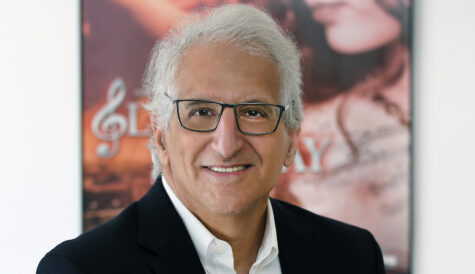Viewpoint: Netflix’s challenge, the next 50 million
Netflix finished 2015 with nearly 71 million paying streaming subscribers, up by 16.4 million year-on-year. To put it another way, Netflix has more than doubled its paying subscriber total since 2012.
 The growth is far from over. Netflix expects to add 6.4 million paying subs in the first quarter of 2016 alone, which would be its best ever quarter.
The growth is far from over. Netflix expects to add 6.4 million paying subs in the first quarter of 2016 alone, which would be its best ever quarter.
So far Netflix’s international operations have enjoyed the most success in English-speaking countries and Latin America.
However, huge expansion is expected following Reed Hastings’ speech at CES in January. Hastings, CEO of Netflix, announced the launch of the streaming service in 130 countries, bringing its total count to 190 territories.
China was a notable exception from the new list. Netflix only ever expects to make a limited impact in China, and anticipates a relatively long wait before market entry. The company needs government approval, which is not at all easy for foreign media companies. Next, it will also almost certainly need a local partner – partly to satisfy the government and partly due to the difficulties for foreign media companies operating alone in China, which already has several well-established local SVOD players.
Netflix should be saluted as no-one else has such global ambitions. However, the firm is the first to admit that there is still much to do, with Hastings revealing in the company’s fourth quarter 2015 earnings call that much of this work will take place over the next two years.
 Revealing your medium-term game plan can be risky as it allows your competitors to react.
Revealing your medium-term game plan can be risky as it allows your competitors to react.
This already happened in Spain. Telefonica reorganised its TV assets into Movistar+ following its acquisition of Canal Plus. Before Netflix’s launch in October 2015, SVOD platform Yomvi became effectively free to Movistar+ subscribers as it was wrapped into its basic package. This is a serious threat to Netflix’s growth chances.
Netflix’s prices in the 130 new countries are US$8-12 per month. These prices are expensive for most developing countries. Hastings said that the company was initially targeting the “elite” in most of these territories, but that pricing may change in the future.
Charging high prices is a risk for Netflix as local competitors can look more attractive. For example, Netflix charges INR500-800/month in India whereas competitors such as Ditto (INR299/month and owned by local media powerhouse Zee) and US studio-backed HOOQ (only INR199/month) are considerably cheaper.
So is Netflix going to maintain its high prices across the world to attract only the elite or will it tailor in subscription fees to each market as it becomes more established?
It’s one thing to charge high prices, but how do you actually collect the revenues? Outside North America, credit card ownership is not necessarily high. Netflix overcame this problem in Latin America by introducing prepaid cards.
Can Netflix operate solely as a global player or does it need local help? The streaming company has signed distribution deals with pay TV operators in several of its existing markets to aid subscription take-up, and we expect this to continue in its new markets.
Local competitors are already established in the local infrastructure and easily outperform Netflix with local content. For example, India’s Ditto offers 100 linear channels, 3,000 movies and more than 100,000 hours of on-demand content.
One of Netflix’s main strengths is its deals with major content owners. Hollywood TV and movie output has worldwide appeal, but interest is also piqued by local programmes. Netflix will have to produce local content in its major markets.
The platform will launch 600 hours of original content in 2016 – up from 450 in 2015. It is expected to spend up to US$6 billion on programmes – compared with $2 billion in 2013. About $1 billion of the 2016 total will be on original content. Reports suggest that content spend will grow by $1 billion each year for the next three years. In comparison, HBO spends about $2 billion a year on content.
Most of Netflix’s original content originates from the US. However, the company is making some efforts to localise. For example, it has commissioned dramas such as Rita in Denmark, Marseille (France), The Crown (UK) and Suburra (Italy).
Perhaps more urgent than local content is local language. As well as the 17 existing languages, Netflix added Arabic, Chinese and Korean in January. Other major languages are certain to follow. Until then, how many Polish homes will want to subscribe to an English-language Netflix?
Another challenge is low broadband penetration in developing countries. Fixed broadband is growing fast, but remains low in major markets such as India. Mobile broadband is growing faster. Mobile SVOD has taken off in the Far East, and is spreading across the rest of the region and into Africa and the Middle East. However, data charges can be high.
Simon Murray is the principal analyst at bespoke research house Digital TV Research




